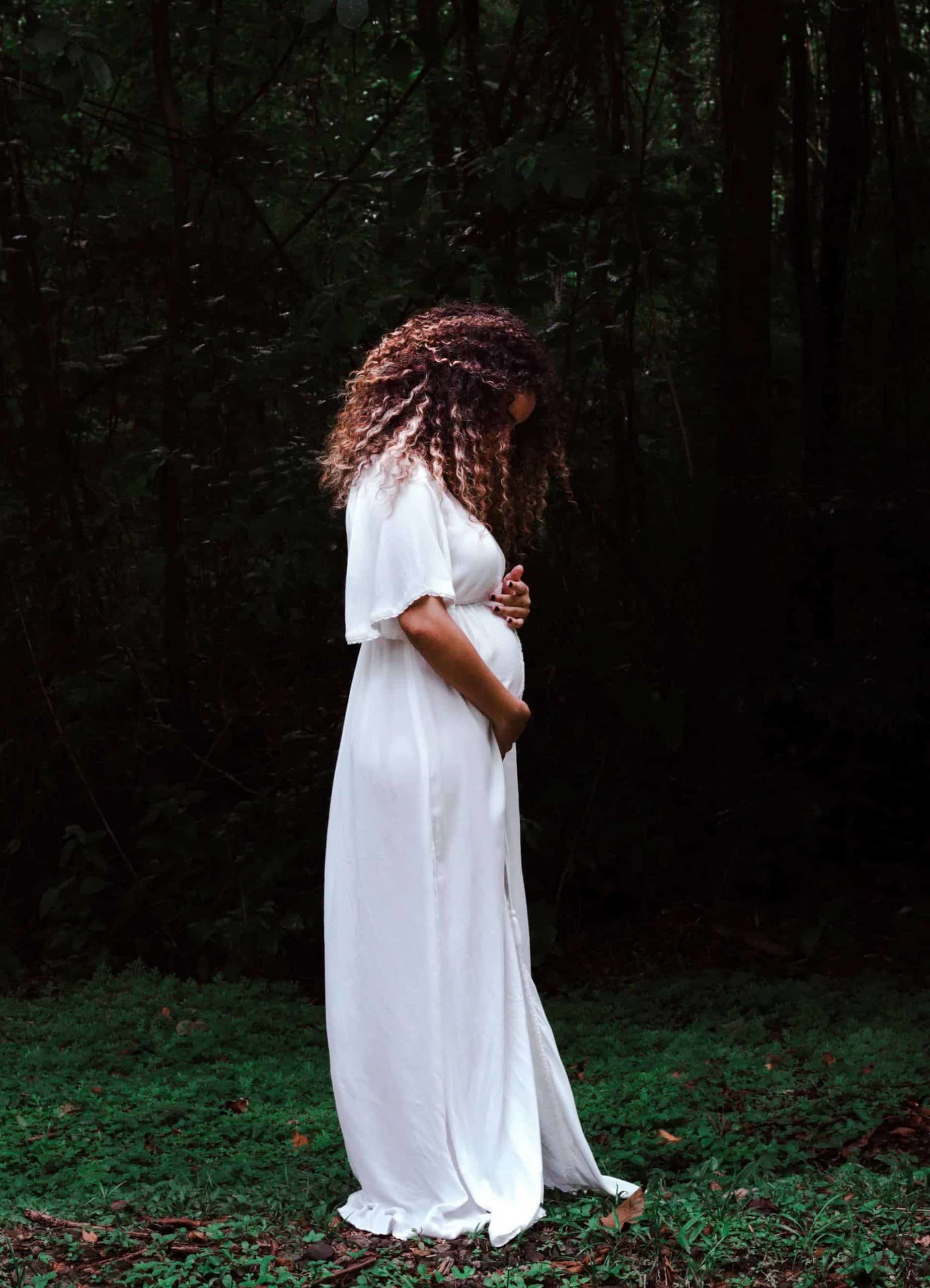Pregnancy Stages and Changes
Stages of Pregnancy
Stages of pregnancy: A typical pregnancy lasts for 40 weeks from the first day of your last menstrual period or until the birth of your baby. It is separated into the first trimester, second trimester, and third trimester. The fetus experiences numerous progressions all through its development.
The first trimester lasts from conception to 12 weeks, the second trimester from weeks 13 to 27, and the third trimester from 28 weeks to birth. This guide will talk about what happens for both mother and child during every trimester.
Pregnancy Complications
Pregnant women may have specific symptoms and complications as the baby develops. Anemia, urinary tract infections, and mood changes may occur. An expectant mother may face hypertension. An extreme form of hypertension, or preeclampsia, increases the danger of preterm delivery and other potential threats for the baby and mother. Extreme morning sickness, or hyperemesis gravid arum, causes severe nausea and vomiting, especially during the first 12 weeks of pregnancy. This may prompt first-trimester symptoms of weight loss and dehydration, requiring intravenous fluids and ant nausea prescriptions.
Pregnant women ought to know about the probability of gestational diabetes. It causes symptoms such as excessive thirst and appetite, frequent urination, and weakness. Obesity and excessive weight gain are conceivable, particularly as pregnancy advances. Women should put on weight during pregnancy, but putting on excess weight might be related to symptoms that put mother and baby in danger. Ask your doctor how much weight you should gain during your pregnancy.
The Three Stages of Pregnancy (1st, 2nd, and 3rd Trimester)
Conception to about the twelfth week of pregnancy marks the First Trimester. The Second Trimester is weeks 13 to 27, and the third Trimester begins around 28 weeks and goes on until birth. This guide will talk about what jumps out at both the mother and child during every Trimester.
First Trimester
Week 1 (conception) to Week 12
Early Changes in a Woman’s Body – First Trimester
A missed period might be the first sign that conception and implantation have happened, ovulation has stopped, and you are pregnant. Other changes will likewise happen.
Physical and Emotional Changes a Woman May Experience – First Trimester
Every organ of the body will be affected by hormonal changes. Some signs that are noticed in the early stages of pregnancy include the following:
- Nausea with or without throwing up (morning sickness)
- Headache
- Tender, swollen breasts; nipples may protrude
- Heartburn
- Extreme fatigue
- Constipation
- Mood swings
- Frequent urination
- Cravings or aversions to certain foods
- Weight gain or loss
Changes in a Woman’s Daily Routine – First Trimester
Some of the changes you experience in your first trimester may make you change your day-by-day schedule. You may need to go to bed earlier or eat more frequent or smaller meals. A few women experience a great deal of uneasiness, and others may not feel any whatsoever. Pregnant women experience pregnancy differently and regardless of whether they’ve been pregnant previously. Pregnant women may feel different with each subsequent pregnancy.
The Baby at 4 Weeks
At 4 weeks, your baby is developing
- Arm and leg buds
- A nervous system (brain and spinal cord)
- A heart
Your baby is now an embryo and 1/25 of an inch long.
The Baby at 12 Weeks
By the end of the first trimester, at about week 12, your baby looks like this:
- Its head growth has slowed
- It is about 3 inches long and weighs almost an ounce.
- Its nerves and muscles are beginning to work together. It can make a fist.
- Its external sex organs show if your baby is a boy or girl.
- Its eyelids close to protect the developing eyes. They will not open again until week 28.
Second Trimester
Week 13 – Week 28
Changes a Woman May Experience – First Trimester
When you enter the second trimester, you may think it is easier than the first. Your nausea (morning sickness) and exhaustion may lessen or disappear. In any case, you will see more changes in your body. The baby bump will begin to appear as your abdomen expands with the developing infant. Before the second trimester is over, you will even be able to feel your baby move!
Physical and Emotional Changes a Woman May Experience – Some changes you may notice in your body in the second trimester include
- Back, abdomen, groin, or thigh aches and pains
- Darkening of the skin around your nipples
- Swelling of the ankles, fingers, and face
- Stretch marks on your abdomen, breasts, thighs, or buttocks
- Patches of darker skin, usually over the cheeks, forehead, nose, or upper lip, sometimes called the mask of pregnancy, melisma, or chiliasm facies
- A line on the skin running from the belly button to the pubic hairline (line nigari)
- Itching on the abdomen, palms, and soles of the feet
- Numb or tingling hands (carpal tunnel syndrome)
The Baby at 16 Weeks – Second Trimester
As your body changes in the second trimester, your baby continues to develop:
- Your baby is 4 to 5 inches long and weighs almost 3 ounces.
- Meconium develops in your baby’s intestinal tract; this will be your baby’s first bowel movement.
- Skin begins to form and is nearly translucent.
- The musculoskeletal system continues to form.
- Your baby begins sucking motions with the mouth (sucking reflex).
The Baby at 24 Weeks – Second Trimester
By 24 weeks, even more changes occur for your growing baby:
- Your baby stores fat, weighs about 1½ pounds, and is 12 inches long.
- Taste buds form on your baby’s tongue.
- The baby’s bone marrow begins to make blood cells.
- Footprints and fingerprints have formed.
- If your baby is a boy, his testicles begin to descend into the scrotum.
- If your baby is a girl, her uterus and ovaries are in place and a lifetime supply of eggs has formed in the ovaries.
- The lungs are formed but do not yet work.
- Your baby has a regular sleep cycle.
- Hair begins to grow on your baby’s head.
Third Trimester
Week 29 – Week 40 (birth)
Changes a Woman May Experience
The third trimester is the last phase of pregnancy. Inconveniences that began in the second trimester will probably continue, along with some new ones. As the baby develops and puts more pressure on your interior organs, you may experience difficulty breathing and need to pee more frequently. This is normal. Once you give birth, these problems should go away.
Physical and Emotional Changes a Woman May Experience – Third Trimester
In the third and final trimester, you will notice more physical changes, including
- Tender breasts, which may leak a watery pre-milk called colostrum
- Hemorrhoids
- Swelling of the ankles, fingers, and face
- Contractions, which can be a sign of real or false labor
- The baby “dropping,” or moving lower in your abdomen
- A protruding belly button
- Other symptoms such as shortness of breath, heartburn, and difficulty sleeping
Changes as the Due Date Approaches – Third Trimester
Changes are going on in your body during the third trimester that you can’t see. As your due date draws near, your cervix becomes thinner and softer in a process called effacement, and this enables the cervix to open during labor. Your doctor will monitor the advancement of your pregnancy with regular tests as you draw close to your due date.
The Baby at 32 Weeks – Third Trimester
At 32 weeks, your baby’s development continues:
- Movements and kicking increase.
- Your baby’s bones are soft but fully formed.
- Lanugo (fine hair) begins to fall off.
- The lungs are not fully formed, but practice “breathing” movements occur.
- The eyes can open and close.
- Your baby’s body begins to store vital minerals, such as iron and calcium.
- Your baby is gaining about ½ pound a week, weighs 4 to 4½ pounds, and is 15 to 17 inches long.
The Baby at 37 to 40 Weeks – Third Trimester
Finally, from 37 to 40 weeks, the last stages of your baby’s development occur:
- By the end of 37 weeks, your baby is considered full term.
- As you near your due date, your baby may turn into a head-down position for birth.
- Your baby’s organs are capable of functioning on their own.
- The average birth weight is 6 pounds 2 ounces to 9 pounds 2 ounces, and the average length is 19 to 21 inches long. Most full-term babies fall within these ranges, but healthy babies come in many different weights and sizes.
9 Months In the Womb
by PregnancyChat
Medical Disclaimer
The information contained in this post is for general information purposes only.
Stages of Pregnancy is not intended to be a substitute for professional medical advice, diagnosis, or treatment. Always seek the advice of your physician or another qualified health provider with any questions you may have regarding a medical condition.

